ACTIVITIES AND ATTRACTIONS
CULTURE
Discover the historic villages
Asolo | Altivole | Maser | Possagno | Castelcucco | Cavaso del Tomba | Cornuda | Mussolente | Romano d’Ezzelino
ASOLO AND THE HISTORICAL VILLAGES
ASOLO AND THE HISTORICAL VILLAGES
At the foot of Monte Grappa, the elegant landscape is dotted with hamlets, villages and districts that have grown up around squares where traditional markets are still held.
MUSEUM ISLAND
This tourist itinerary, (Isola dei Musei in Italian) includes Asolo Civic Museum, Antonio Canova Gypsotheca Museum, Villa Barbaro in Maser, Villa Emo in Fanzolo di Vedelago and Casa Giorgione Museum in Castelfranco Veneto. If you pay the full price for the first site, you’ll receive a voucher for one year, allowing you to visit the other sites at a reduced rate.
ASOLO
The City of a Hundred Horizons
“Between the Piave and Brenta rivers, there are several rows of pyramidal hills, which are some of the most beautiful in Italy. On the last hill of the first row, there’s a high square fortress, and the houses of Asolo stretch out behind it.” (G. Comisso)
For centuries, the town of Asolo has been the ideal place to rediscover the natural flow of life, as experienced by the noble families of Venice and later it was chosen as a place of refuge for the soul by personalities such as the ‘Divina’ of the theatre, actress Eleonora Duse, writer and traveller Freya Stark (who’s buried in the cemetery of Sant’Anna), Robert Browning and Carlo Scarpa.
Nature and culture go hand in hand in Asolo, where you can take relaxing walks through elegant alleys and gentle paths, suitable for all types of tourists who want to take the risk of falling in love. When you visit Asolo, don’t miss the Civic Museum, the Cathedral of Santa Maria Assunta, the Castle of Caterina Cornaro and the Rocca.
This little corner of Italian paradise, with an international flavour but firmly rooted in Venetian tradition, is waiting to be discovered. Asolo is rightly one of the Most Beautiful Villages in Italy, a Slow Town and Touring Club Orange Flag, the institutional headquarters of Asolo Prosecco Superiore DOCG, the City of Oil and the City of Honey.
A visit to Asolo Civic Museum
The three floors of the permanent collection tell the story of Asolo’s millenary history: the archaeological section displays remains from prehistoric times to the early Middle Ages, including the rich Roman period of ancient Acelum; the first floor houses an art gallery with works by Luca Giordano, Bernardo Bellotto, Bernardo Strozzi and Antonio Canova’s marble Paride; the last floor is dedicated to the women of Asolo: from Caterina Cornaro, Queen of Cyprus, Armenia and Jerusalem and Lady of Asolo, to writer and traveller Freya Stark, passing through the brand new Duse section, with clothes, objects and souvenirs of actress Eleonora Duse, known as ”la Divina”.
For information: www.museoasolo.it
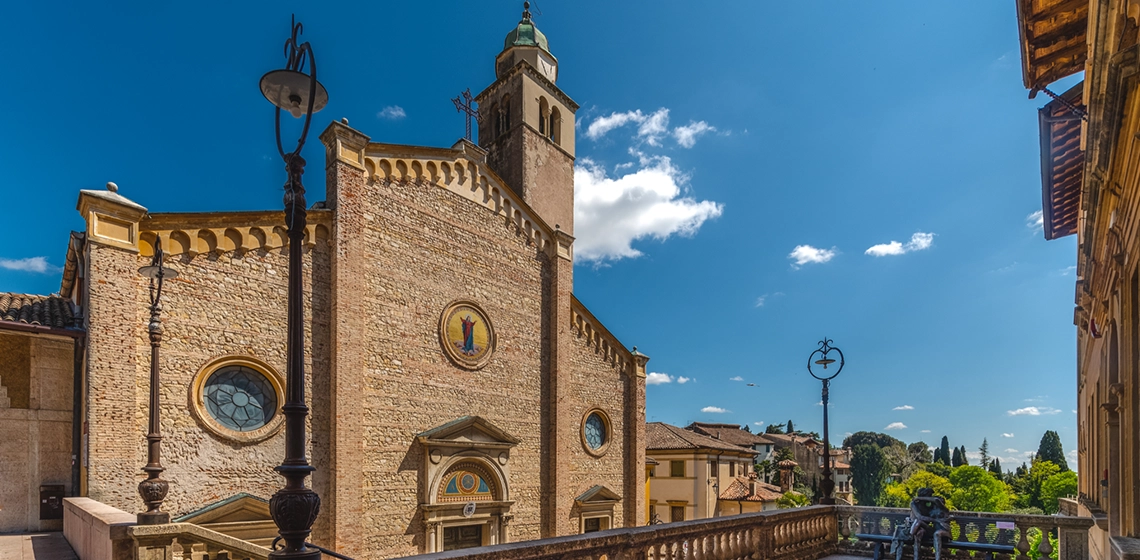
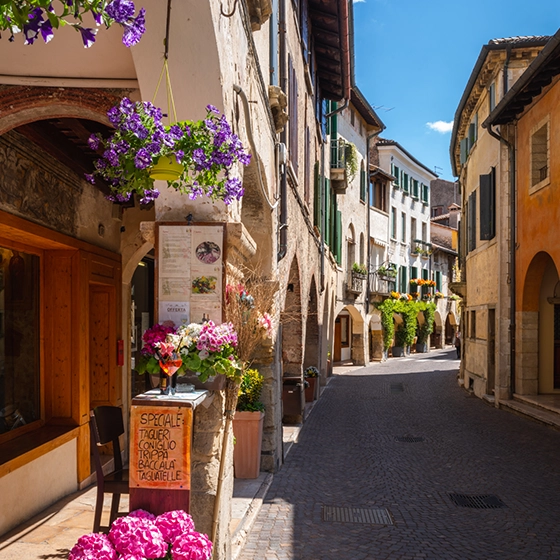
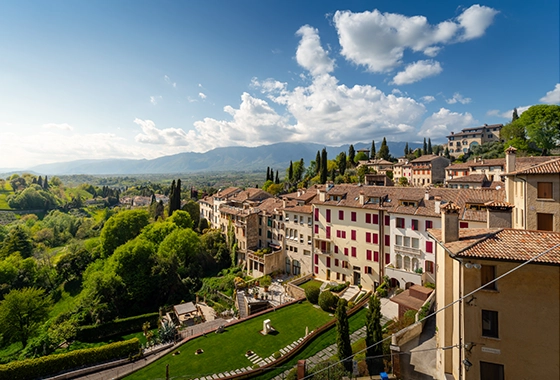
TIPS AND FUN FACTS
Antique markets
Among the stalls you can buy handicrafts, artistic artefacts and collectors’ items. The market is held every second Sunday of the month in the squares of Asolo and every third Sunday of the month in the square of San Zenone degli Ezzelini.
Ancient paths for easy walks
Each town is surrounded by gentle hills, crisscrossed by ancient, well-marked paths that can be explored on foot. Trekking lovers should not miss the Due Rocche Path, which leads from Rocca di Asolo to Rocca di Cornuda, crossing the Maser hills.
Asolo and the surrounding hills are a stop on important itineraries: the Cammino di Sant’Antonio da Padova and the Cammino del Beato Enrico.
The Ezzelini Path by bike
For lovers of “slow” cycling, we recommend the beautiful cycle path from Asolo down to Padua. The route follows the Muson stream and you can safely visit the towns of Castelfranco (17 km) and Camposampiero (27 km).
ALTIVOLE
FAI – Brion Memorial
Located in San Vito in Altivole and facing Asolo, this is one of the most striking examples of modern architecture.
Designed by Carlo Scarpa in the 1970s, this work is conceived as an oriental garden (Chinese and Japanese together) and includes pools with water lilies, a meditation pavilion, a chapel and the shrine of the Brion couple, Giuseppe and Onorina, founders of the iconic Brionvega radio and television brand.
Since June 2022, the Brion Memorial has been owned by FAI (the National Trust for Italy).
For information (updated opening hours, guided tours, services): www.memorialebrion.it
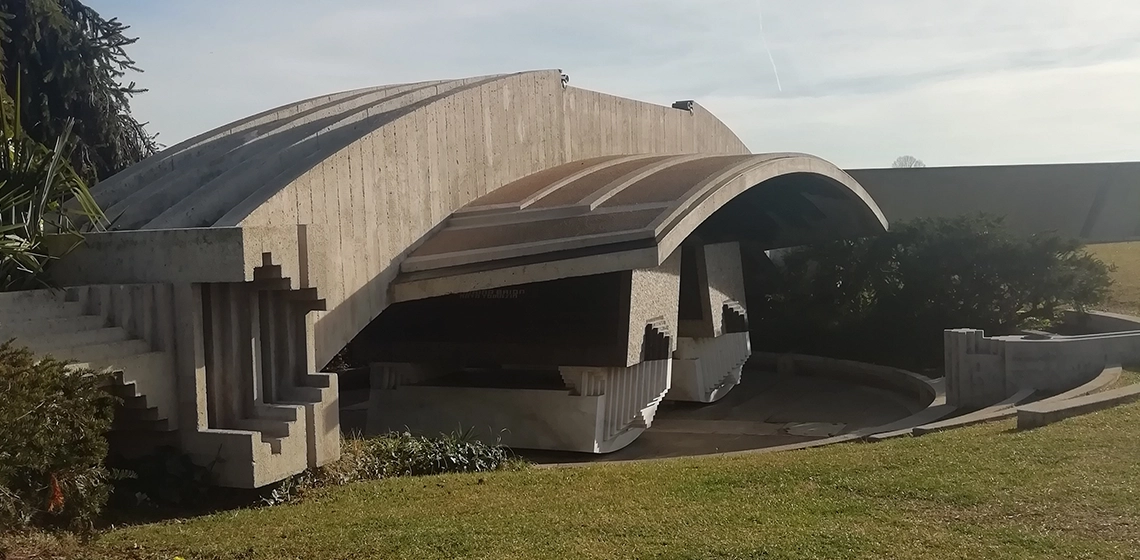
MASER
Villa di Maser
Villa di Maser is still owned by the noble Venetian Barbaro family today, and is one of Palladio’s masterpieces, set in the green Asolo hills. It’s a UNESCO World Heritage Site and was built between 1554 and 1560 on the slopes of the Asolo hills. This stunning country residence has two dovecote towers and the rooms are decorated with a cycle of frescoes by Paolo Veronese.
Besides the villa, there is also a double garden and the family’s wine cellar, which still produces Prosecco and other quality wines.
For information: www.villadimaser.it
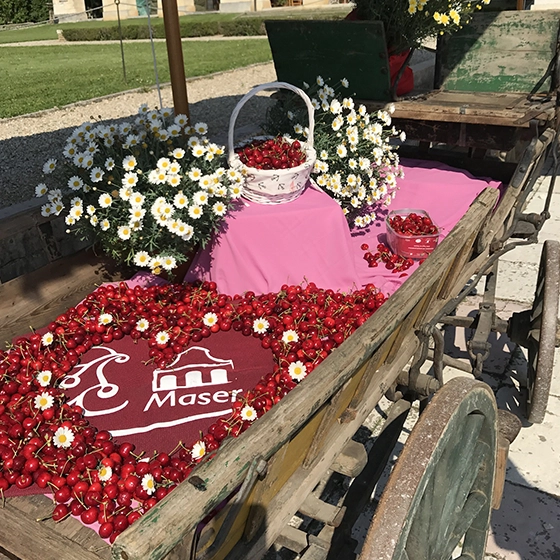
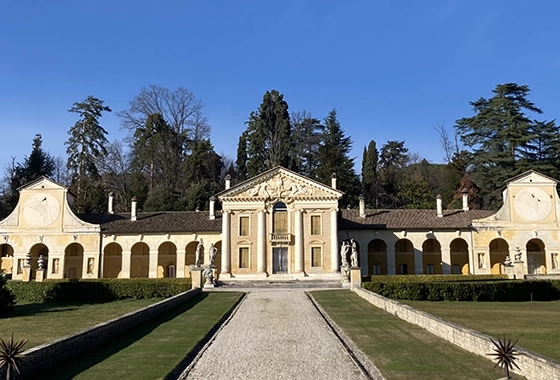
POSSAGNO
Antonio Canova
On the slopes of Monte Grappa, you’ll find a town with a thousand years of history: Possagno. The famous sculptor Antonio Canova was born here on 1 November 1757. The house where he was born (now the Canova Museum) is well worth a visit. It offers tourists a unique experience: entering the white universe of the Gypsotheca to admire a unique collection of plaster casts by the master of Neoclassicism.
Not far away stands the Temple, an imposing church designed by Canova and where the artist is still buried.
The traditional Coppo di Possagno is also worth a visit.
You can also see signs of imposing quarries, as Possagno is one of the main Italian centres for brick production.
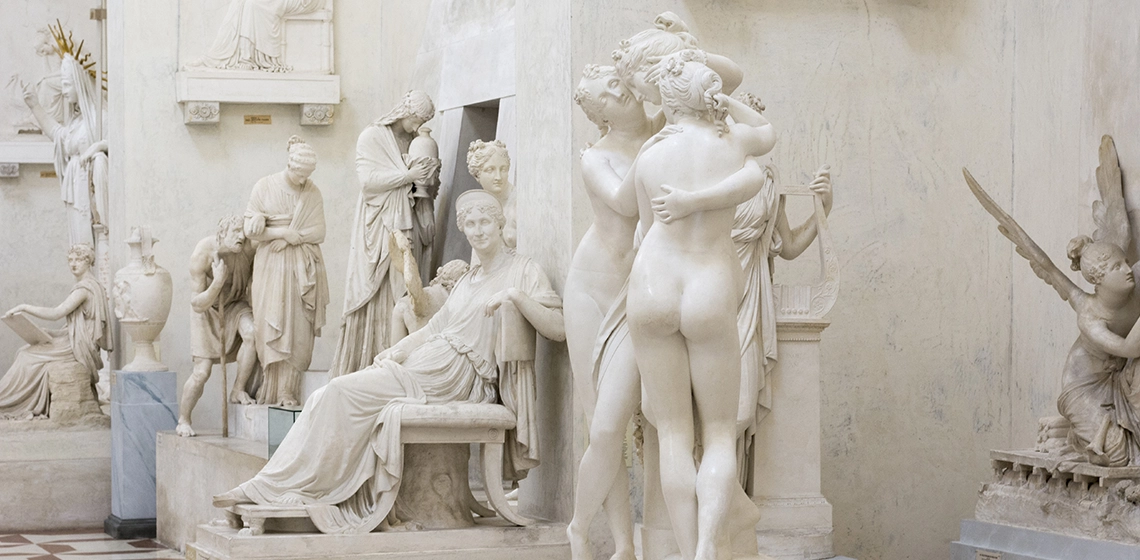
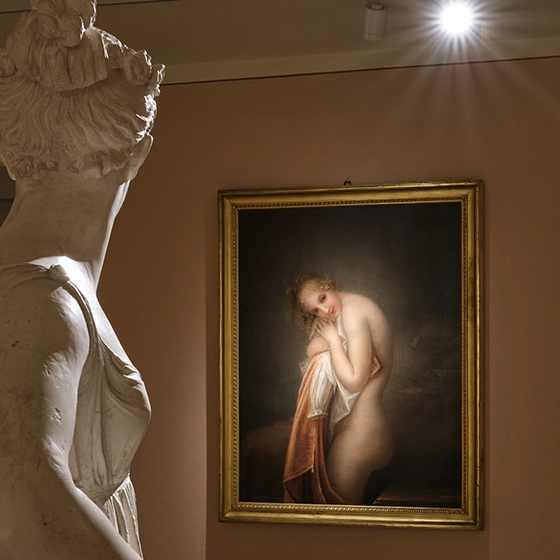
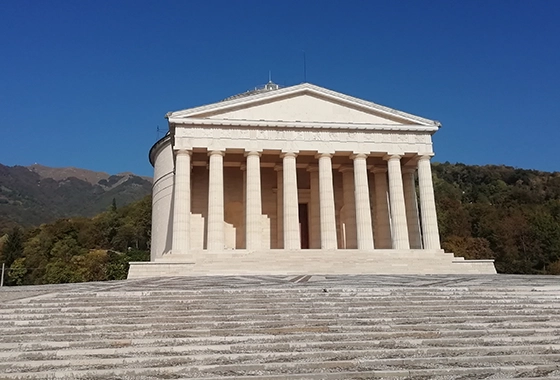
FUN FACTS
Gypsotheca and Canova Museum
Antonio Canova left his artistic legacy in the house where he was born in Possagno and in the solemn Gypsotheca, built in 1936, which houses almost all the plaster models of his sculptures, together with terracotta sketches and paintings. In addition to guided tours, the Canova complex, which was expanded by Carlo Scarpa in 1957, offers guided tours, educational activities, workshops and events to spread the word about Canova.
For information: www.museocanova.it
Temple of Canova
The neoclassical church (1819-1832) was designed by the artist as a gift for his community and brings together three different architectural styles: the imposing colonnade recalls the Greek style of the Parthenon, the central body is reminiscent of the Roman Pantheon, while the apse of the high altar recalls Canova’s typical Christian architecture. Inside are the artist’s tomb and some important artworks.
For information: www.tempiocanoviano.it
CASTELCUCCO
Churches and Oratories
This town, surrounded by gentle hills, is famous for its small churches and medieval oratories, which can be visited by following easy paths through the countryside. The small church of San Bartolomeo, nestled in the hills, is particularly beautiful. The first part of the church was built around the 8th century. Along the road to Pieve del Grappa, on the left, there is another beautiful oratory: the Oratory of Santa Lucia. The first part of this building dates back to the 6th century.
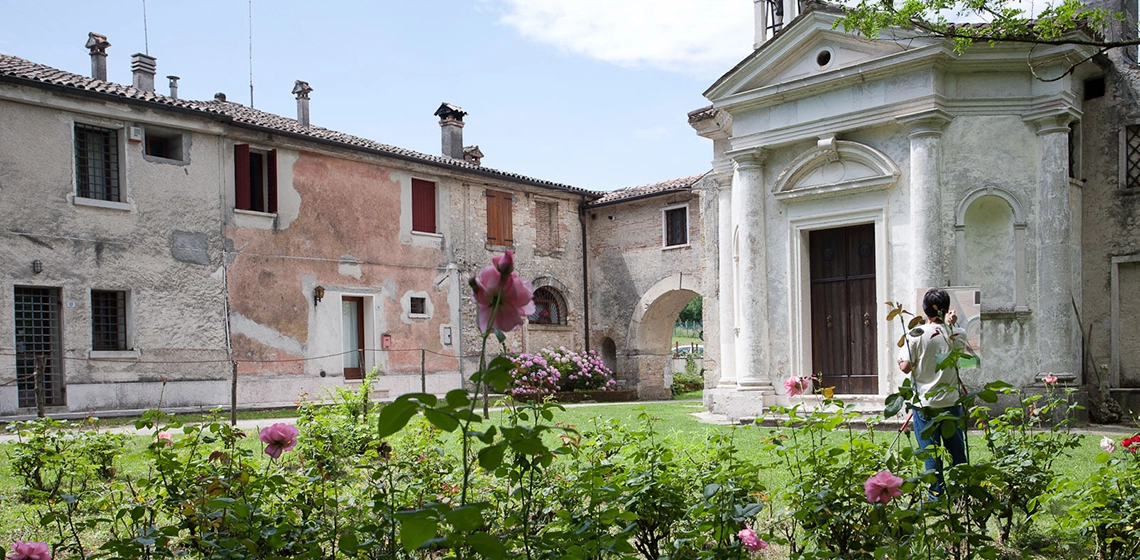
CAVASO DEL TOMBA
Church of San Martino
The small church of San Martino was built around the year 1000. There are two stone artefacts kept inside: a stele with two faces bearing an inscription in the Rhaetian-Etruscan alphabet and in ancient Latin, and a funerary stele of Calpurnio Saturnino, a local personage. The small church is decorated with a series of frescoes dating back to the 16th century.
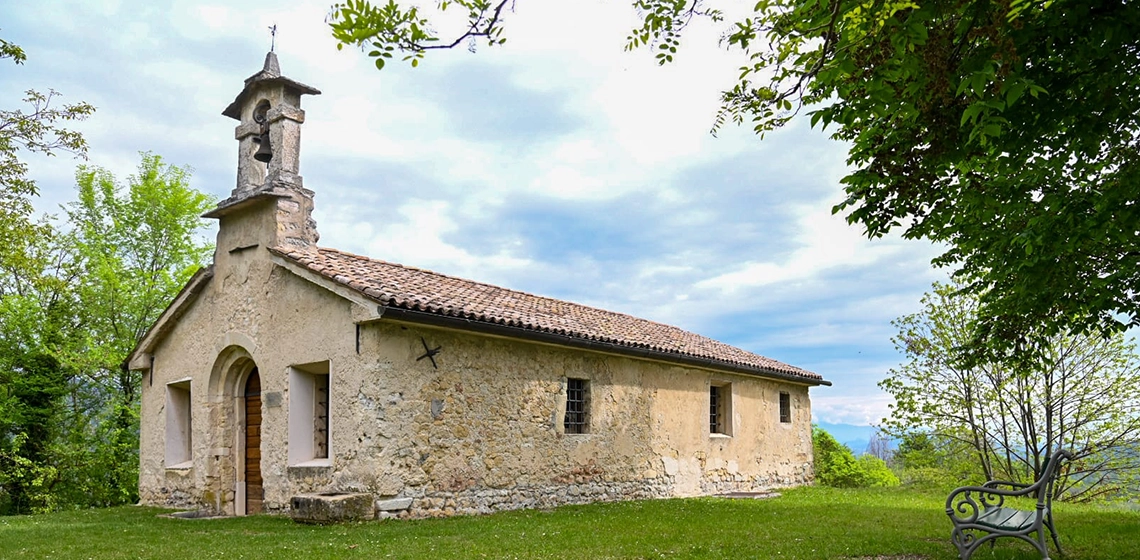
CORNUDA
Tipoteca
Museum, archive, library, print shop, gallery and auditorium: these are the different ways in which the Tipoteca (Museum of Printing and Typographic Design) offers its visitors the opportunity to discover and experience the beauty of the art of printing.
Through guided tours, workshops, temporary exhibitions and meetings, the Tipoteca encourages dialogue between the past and present of the cultural revolution that has marked the last five centuries: printing.
The Tipoteca can be a source of inspiration for scholars and enthusiasts who want to learn about the origins of a typeface or even use it in their own printing project.
For information: www.tipoteca.it
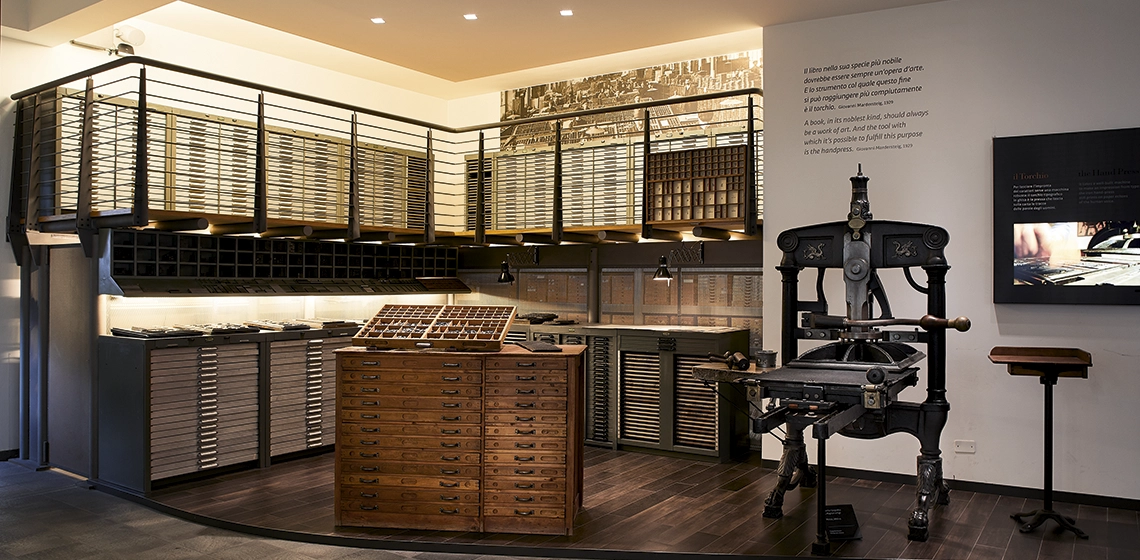
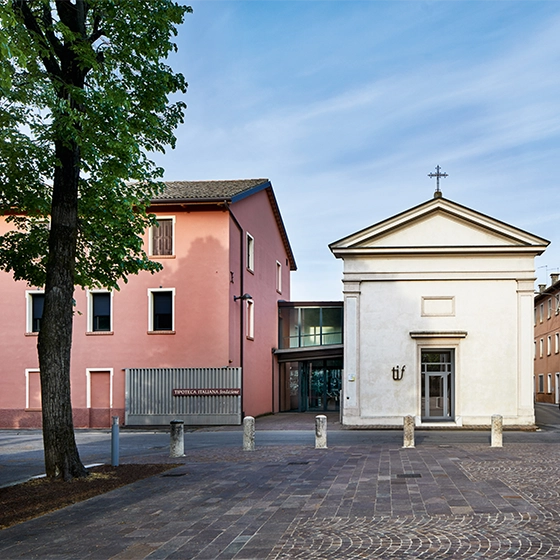
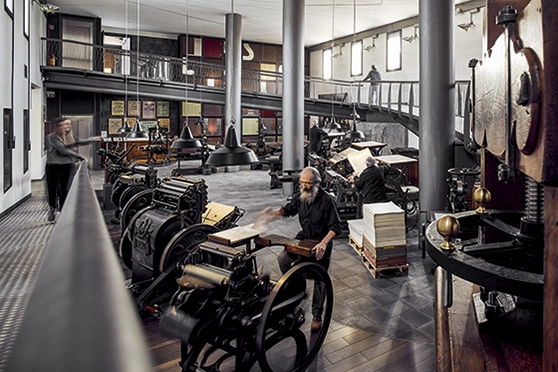
MUSSOLENTE
Sanctuary of Madonna dell’Acqua
The sanctuary is on Colle Castellaro and was built between 1770 and 1800 on top of an older medieval foundation dedicated to St. Peter.
Roccolo
The Roccolo – an old hunting post used to hunt birds – is a rare and ancient example of an arboreal arrangement and is an integral part of the park of Villa Negri-Piovene.
Nature Trails
Conceived as true cultural routes, the Mussolente Nature Paths are four different itineraries that wind through the hills behind the town and allow visitors to observe the natural, historical and panoramic beauty of the area. The trails also encourage visitors to learn about and respect the territory, and to appreciate how important it is and how we need to protect it for future generations.
For information: sentierinaturamussolente.it
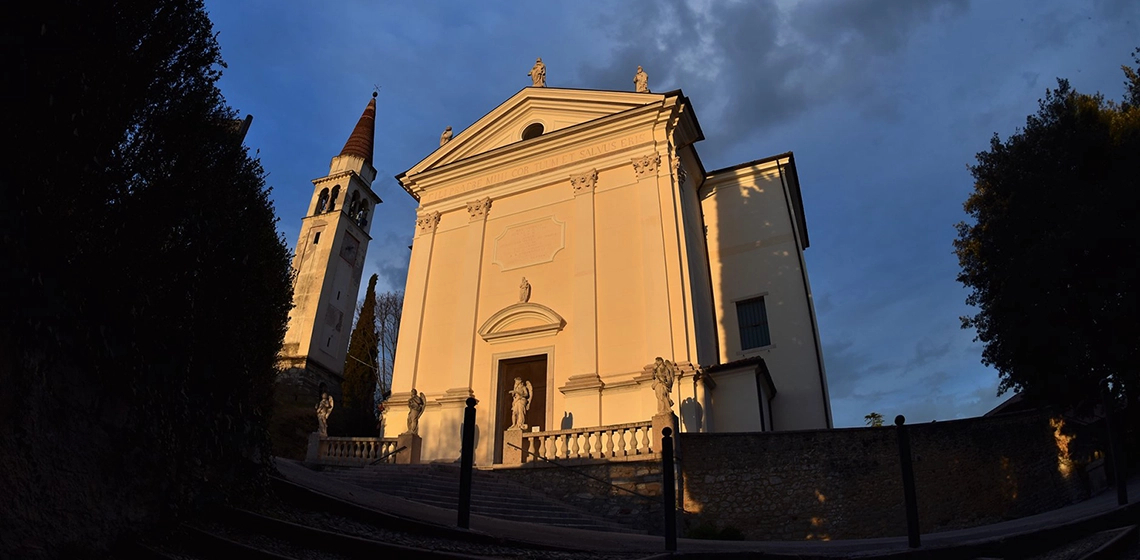

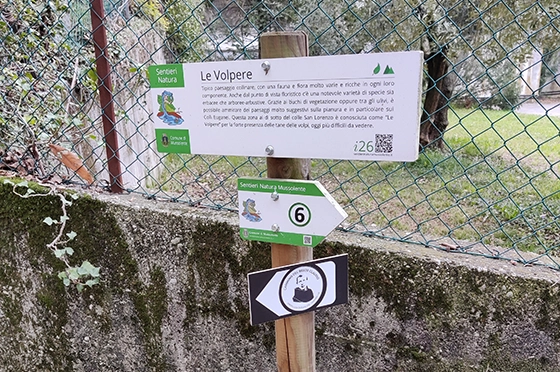
ROMANO D’EZZELINO
Romano d’Ezzelino is the first town in the province of Vicenza and the last one at the foot of Monte Grappa, on the southern slope. It’s definitely worth a visit for a number of reasons, both historical and cultural, as well as natural.
Climbing up to the massif from Romano, you reach Valle Santa Felicita, one of the most important valleys of Grappa. There are several paths that start from the bottom of the valley and reach the top of the mountain, crossing the whole valley, making this area ideal for trekking and biking enthusiasts.
If you are interested in history and culture, don’t miss Dante’s Hill, so called because the writer mentioned it in the Divine Comedy. From the top of the hill you can see all the way down to San Zenone and Bassano del Grappa. Romano is also home to the Bonfanti-Vimar Automobile Museum, a unique exhibition where visitors can admire vintage cars and learn about automobile history. The Venetian villas in this municipality are also worth a visit, but they can only be visited by appointment: Villa Stecchini, Villa Cà Cornaro and Villa Negri, in whose park the historic Palio delle Contrade is held every year.
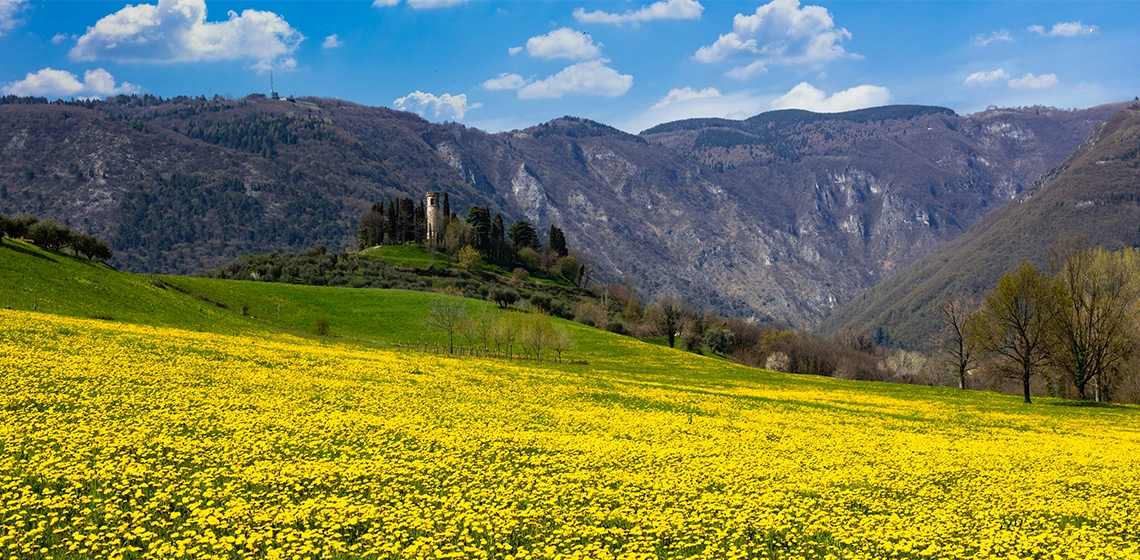
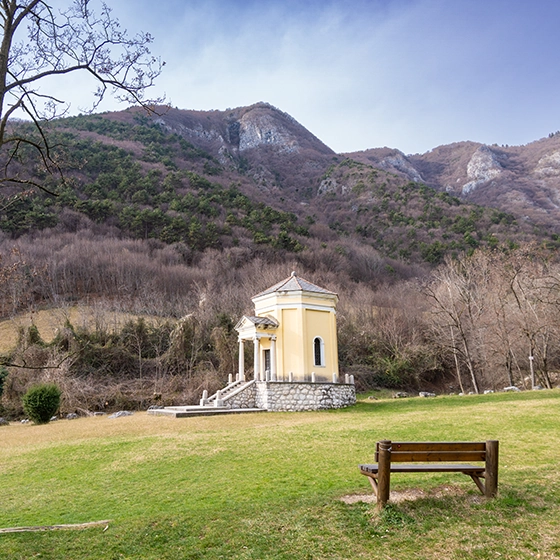
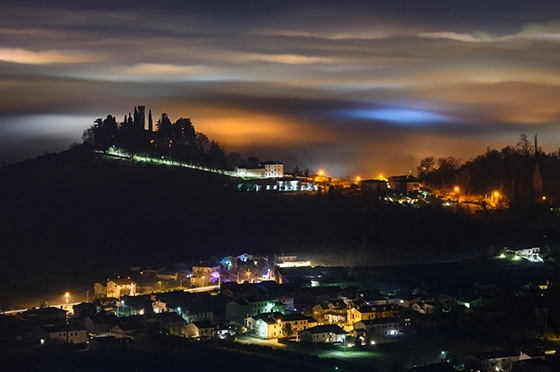
FUN FACTS
Palio delle Contrade of Romano d’Ezzelino
This contest has been held for over 50 years and includes a donkey race.
The jewel in the crown of the Palio is the presence of real ‘rustic venues’, located in various corners of the town, which offer a glimpse of everyday life in the past. It is a representation of moments of life in the past in a typical context, i.e. old farmhouses, courtyards and agricultural fields. A fantastic opportunity to learn about the history and traditions that still characterize these areas today.


